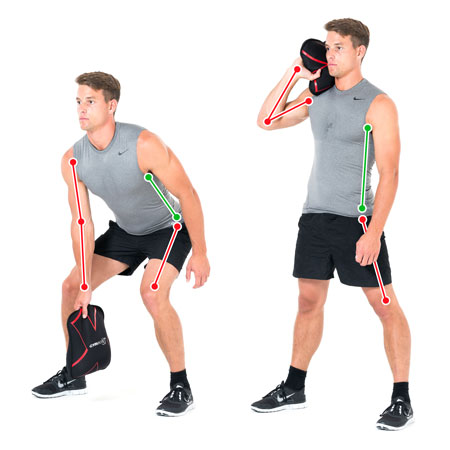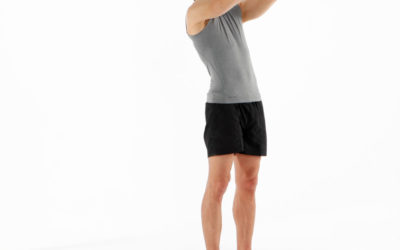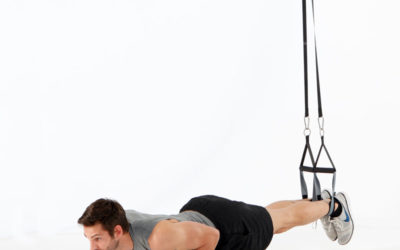Lift Sand-Pad with one arm to shoulder
- Degree of Difficulty 60%
 One arm shoulder lift with Sand-Pad
One arm shoulder lift with Sand-Pad
Short Description
- Body is bent forward. Extended arm holds the Sand-Pad shortly above the floor.
- Pull Sand-Pad to your chest.
- In turning point flip it over to the shoulder.
- Bring back the Sand-Pad to initial position.
Long Description
- Your feet are shoulder-wide. Legs and knees are bent. Body is slightly bent forward. One arm hangs extended closely above the floor, holding the Sand-Pad. Make sure that your back is in a straight position while bending forward.
- The Sand-Pad is pulled close to the body and in one line upwards to the chest. Legs and hips are stretched to generate the movements impulse.
- In front of the chest turn your elbow and hand backwards, so that the Sand-Pad lies on the shoulder of the trained arm. The upper part of the body and legs are in one line in this position.
- To bring the Sand-Pad back to the initial position, lift the pad through a slight extension of the arm. Keep it close to the body while bringing it back to the floor.
Tips
Your back needs to be always in a straight position. Move the Sand-Pad every time close along your body.
Additional exercise instructions
The Sand-Pad exercise “One Arm Lift to Shoulder” affects many different joints. Muscles of the back, legs, arms and shoulders are activated in the exercise.
Related Sand-Pad exercises
Long Back Pull
The Long Back Pull is an effective exercise to train the posterior shoulder, the complete back and the arms. Due to the long lever action of the arms, the exercise concerted trains the medial and lower back. This version additionally trains the rotator cuff of the shoulder joint.
Low-Row
The exercise trains the complete back muscles, both dynamic and static. The inclination angle of the body is relevant for the training load.
Triceps
The triceps exercise is a concentrated exercise for the arms and requires a good body tension.
Biceps Curl
This Biceps exercise is very focused on the biceps and requires a high degrees of body tension. Small changes of the inclination angle create an intense strain.
Push-up
The push-up requires a large abdominal muscle strength. The push up is one of the most effective exercises to train chest, arms and the body stability. The further the distance from the suspension point, the more intense is the exercise for the abdominal muscles.
Lower Back Swing
This exercise trains the posterior ischiocrural muscles, the buttocks and the lower back. It requires a lot of body tension.






